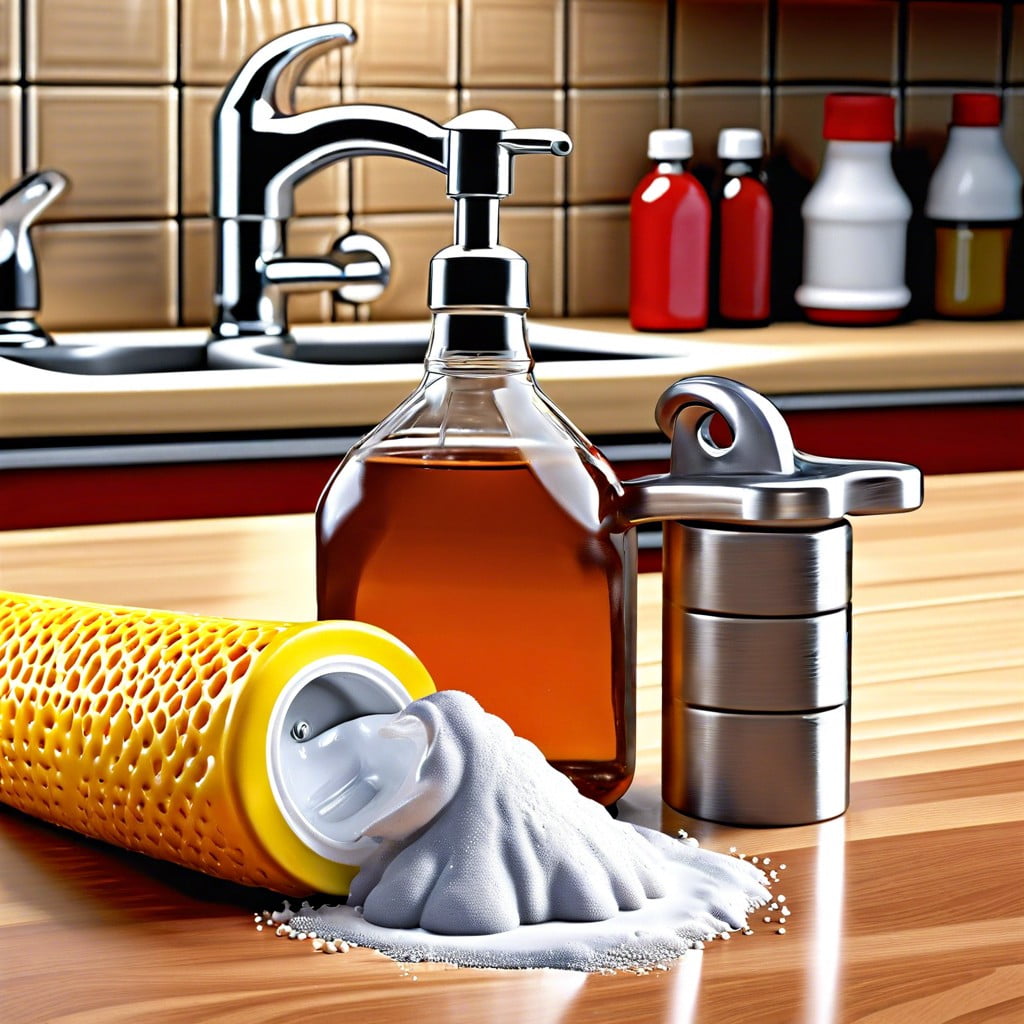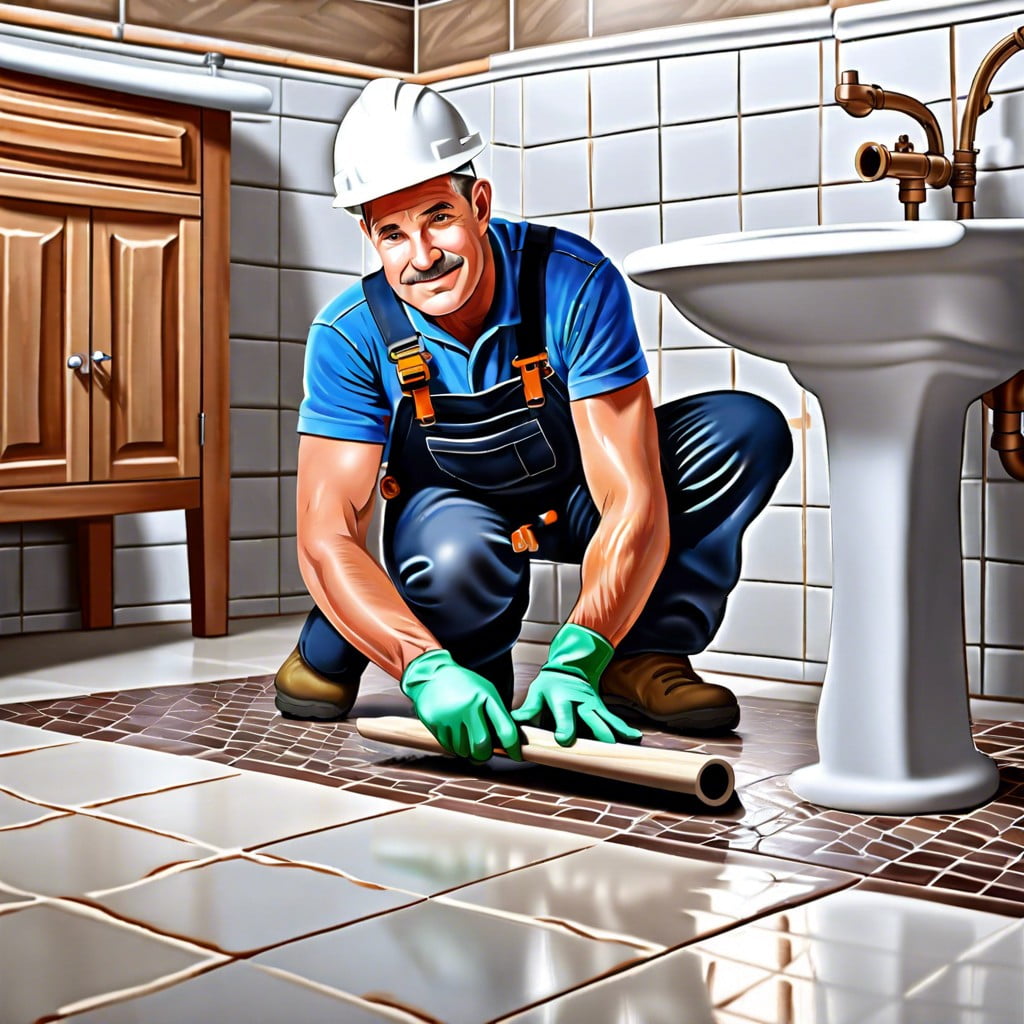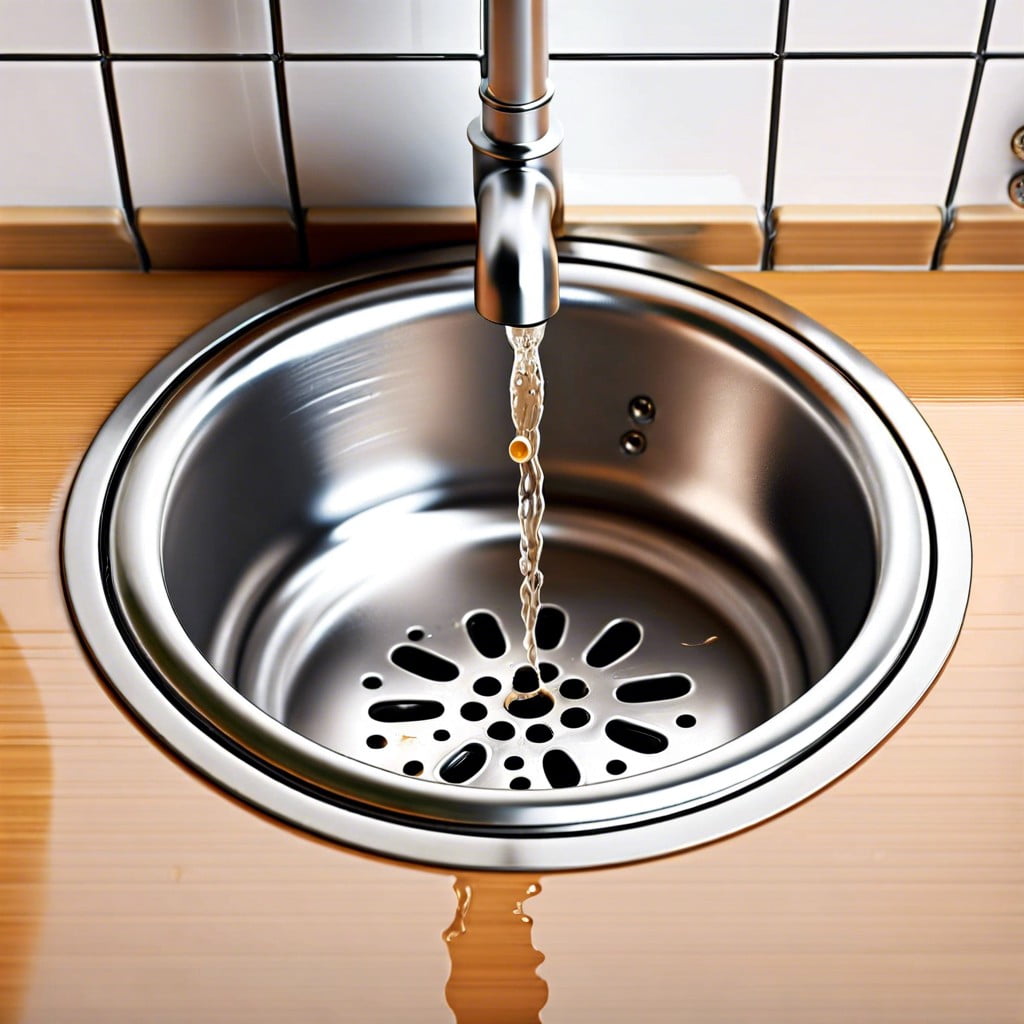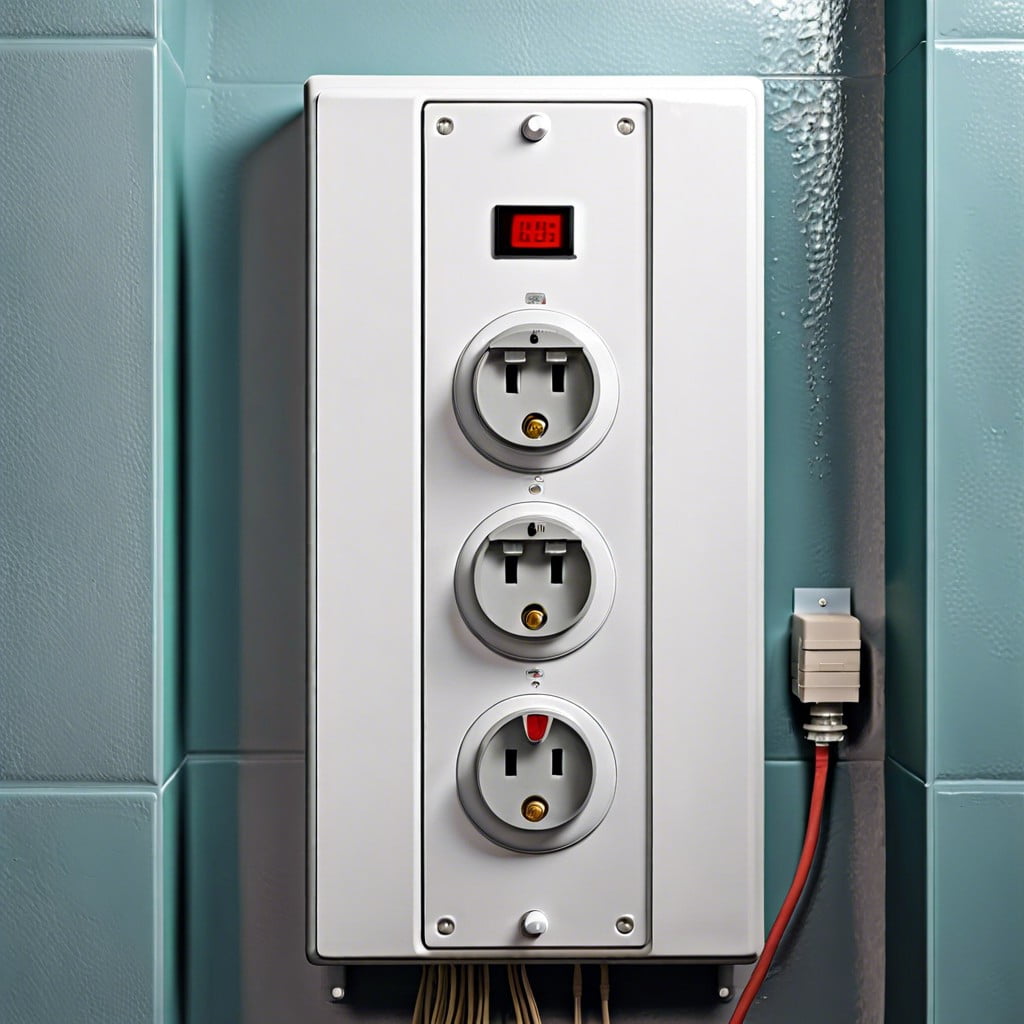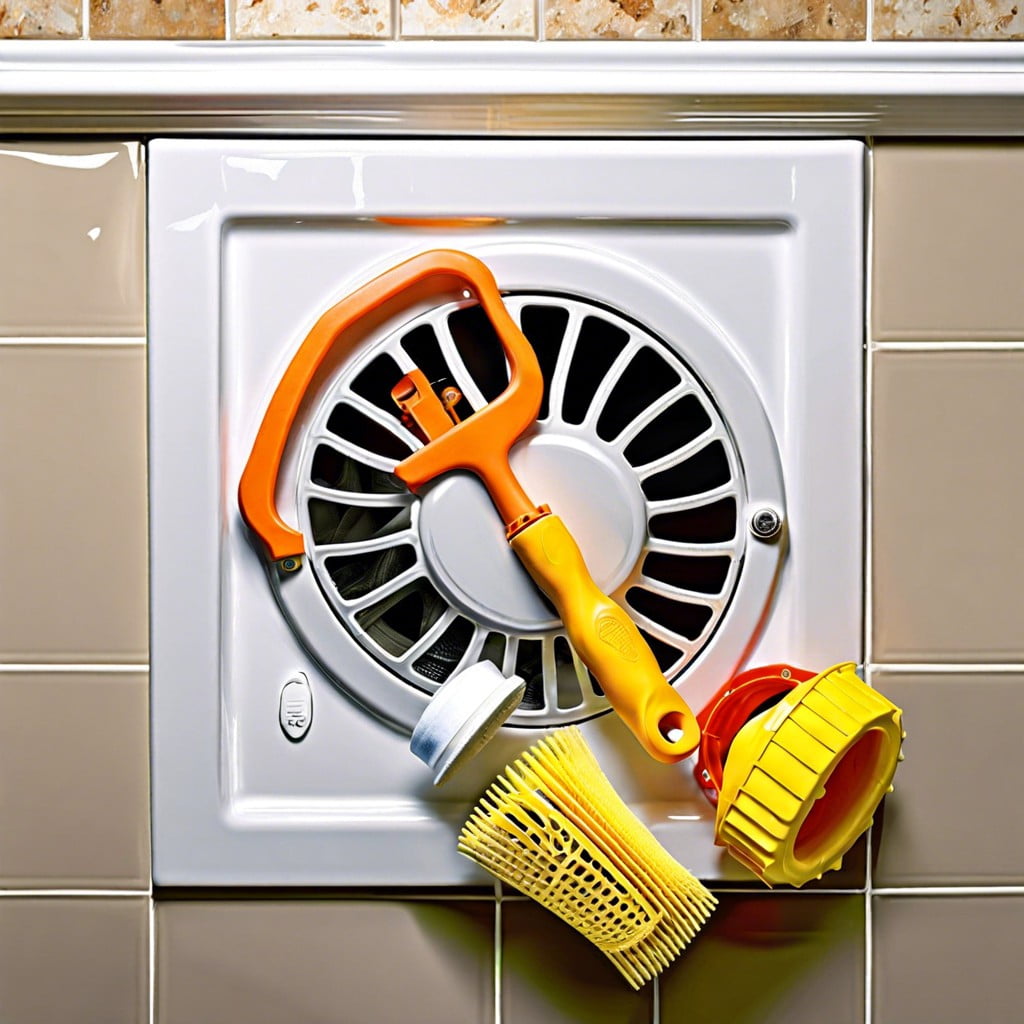Last updated on
This practical guide will arm you with effective methods and insider tips on how to clean bathroom tile, ensuring your tiled surfaces stay shining and free from grime.
Key takeaways:
- Ceramic and porcelain tiles: use warm water and dish soap.
- Natural stone tiles: use pH-neutral cleaners to protect integrity.
- Glass tiles: use a vinegar and water solution for streak-free cleaning.
- Vinyl tiles: use a vinyl-safe cleaner and a soft mop.
- Grout lines: use hydrogen peroxide and baking soda paste, avoid bleach.
How to Clean Different Types of Bathroom Tiles
Ceramic and porcelain tiles, largely impervious to moisture, simply demand a mixture of warm water and a dash of dish soap. For stubborn stains, a baking soda paste works wonders.
Natural stone tiles — think marble or travertine — are a different beast. Acidic cleaners spell disaster here; they etch and dull the surface. Rather, go for pH-neutral solutions to safeguard their integrity.
Glass tiles sparkle with a spritz of half vinegar, half water solution, easily whipping away soap scum without leaving cloudy streaks.
Vinyl tiles, common in many a bathroom, love the gentle touch. Avoid abrasive tools. A soft mop moistened with a vinyl-safe cleaner will maintain their sheen without scratches.
Grout lines, the bane of tile cleaning, require a focused approach. A soft-bristled brush paired with a hydrogen peroxide and baking soda paste will do the job without the harshness of bleach, keeping those lines crisp and clean.
Always spot-test your chosen cleaner in an inconspicuous area first to ensure it doesn’t damage the tile’s finish. Regular maintenance is the key to a bathroom that stays perpetually fresh, minimizing the elbow grease required over time.
Materials Needed for Cleaning Tile and Grout
Equipping yourself with the right tools is the bedrock of a successful cleaning mission. A stiff-bristled brush or an old toothbrush makes short work of pesky grout lines.
For the tiles, microfiber cloths or a sponge mop offer a gentle but effective touch. Opt for distilled white vinegar or a pH-neutral cleaner to maintain tile integrity while bringing that shine back.
Baking soda becomes an indispensable ally when tackling grout grime; mix it with water to create a powerful paste.
Don’t overlook protective gloves – they are your first line of defense against harsh chemicals and prolonged water exposure.
Lastly, having a spray bottle on hand streamlines the cleaning process, ensuring even coverage and sparing use of your chosen solutions. These are the unsung heroes that will transform your tiles from lackluster to lustrous.
Step-by-Step Process for Cleaning Bathroom Tiles and Grout
Begin by sweeping or vacuuming to remove loose dirt. Prevent scratches by clearing the surface before using any liquid solutions.
Mix your chosen cleaner with water if required. Read labels carefully; a wrong dilution ratio can be ineffective or damage the tiles.
Apply the cleaning solution using a spray bottle or a damp cloth. Do not saturate the tiles; excessive water can damage grout.
Scrub tiles with a soft brush, focusing on mildew and stains. Use a toothbrush for grout to avoid damaging its seal.
Rinse with clean water to remove residue. Leaving cleaner on tiles can attract dirt or cause a dull appearance.
Dry tiles and grout with a clean towel. This step is vital to prevent water spots and to inhibit mold growth in damp areas.
Use a grout sealer annually to maintain cleanliness and integrity. This precaution extends the life of your grout and reduces cleaning effort.
Regular maintenance is key. Routine light cleaning is easier and more effective than infrequent deep cleans.
When to Call a Professional for Tile and Grout Cleaning
Identifying when to summon a professional tile and grout cleaner can be straightforward if you know what to look for. Call in the experts when:
- Persistent Stains Refuse to Budge: If you’ve tried every trick in your arsenal and those grout lines still look dirty, it’s time for professional intervention.
- Mold and Mildew Take Hold: These fungi are not just unsightly but can be health hazards. If regular cleaning doesn’t keep them at bay, professionals have the right tools to safely rid your bathroom of these unwelcome guests.
- Grout Discoloration: Grout is porous and can become permanently discolored. A professional deep cleaning or re-grouting might be necessary to restore its appearance.
- Time Constraints: If your busy life prohibits the dedication required for a thorough clean, a professional can handle the task efficiently and effectively.
- Saving on Supplies: Investing in specialized cleaners and tools adds up. Sometimes, hiring a professional can be cost-effective in comparison to purchasing products for a one-time deep clean.
- Enhancing Tile Lifespan: Well-maintained tiles last longer, and professionals know how to extend their life using safe, appropriate cleaning techniques.
- Preparing for Special Events: When you need your bathroom to sparkle for guests or a special occasion, professionals can achieve that extra shine.
In these cases, the expertise of a professional cleaner can ensure a deep clean without risking damage to your bathroom’s tiles and grout.
FAQ
What is the best thing to clean bathroom tiles with?
The most efficient agent to clean bathroom tiles remains a homemade paste of vinegar and baking soda, applied directly to the surface, allowed to break down the dirt before rinsing.
What is the best cleaner for a tile bathroom floor?
In my opinion, the most effective cleaner for a tile bathroom floor is white vinegar, as its natural disinfectant properties and acidity provide excellent grime and dirt breakdown capacity without harming the ceramic.
What are some eco-friendly solutions for cleaning bathroom tiles?
Eco-friendly solutions for cleaning bathroom tiles include using baking soda and vinegar, a steam cleaner, or a plant-based tile cleaner.
How can you prevent mold and mildew growth on bathroom tiles?
To prevent mold and mildew growth on bathroom tiles, ensure proper ventilation, regularly clean and dry the tiles, and consider using anti-microbial or mold-resistant grout.
What’s the most efficient method for cleaning grout between bathroom tiles?
The most efficient method for cleaning grout between bathroom tiles is using a mixture of baking soda and vinegar, applied with a stiff brush for deep cleaning.
Recap
